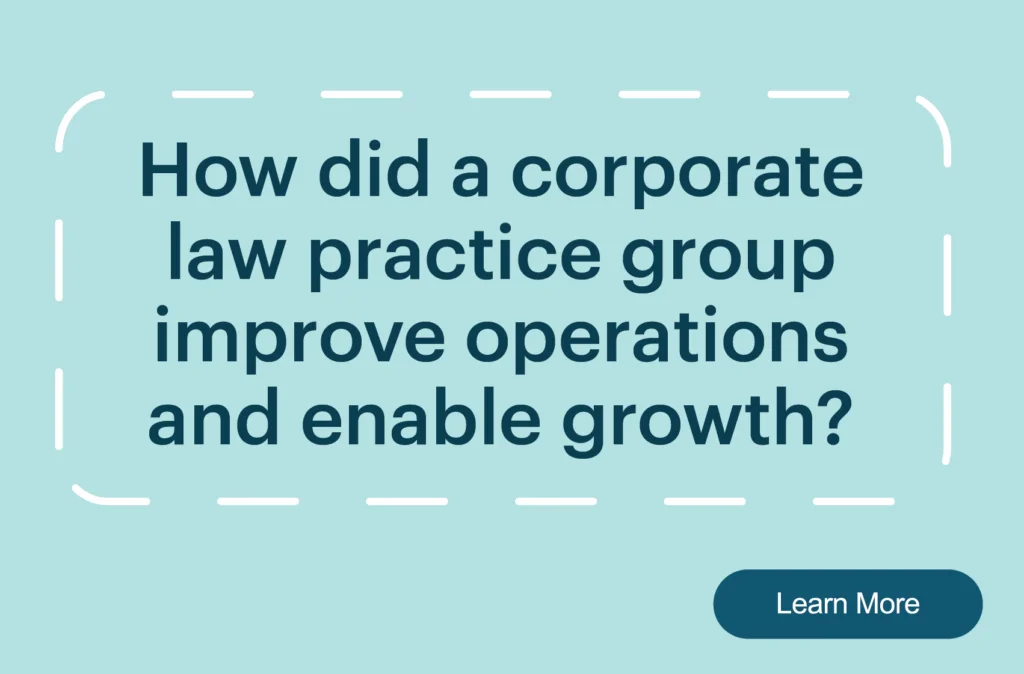The role of legal project managers (LPMs) continues to grow and gain momentum, particularly in managing risk, efficiency, and budgeting matters. Legal operations and executive teams can support LPMs by deploying solutions that optimize workflows and resource management, which ultimately enhances firm competitiveness and operational efficiency. This article explores how operations and leadership can maximize their LPMs’ effort, especially when working with fixed or capped fee matters where visibility, budget control, and risk mitigation are critical.
The Strategic Importance of Legal Project Managers
Legal project managers are not administrative coordinators; they are strategic linchpins responsible for driving coordination among legal teams, finance, vendors, and operations. Their role extends to mitigating risk and maintaining budget oversight throughout a matter’s lifecycle. Effective collaboration between LPMs and key stakeholders, including clients, ensures smooth execution of legal projects, which is critical for firms operating under fixed or capped fees where the margin for error is limited. Successful project management improves client satisfaction by delivering predictable results and timely outcomes while safeguarding the firm’s reputation.
Operations’ Role in Supporting Legal Project Managers
Operations teams play a crucial role in enabling LPMs to focus on their strategic responsibilities by providing consistent and transparent workflows that reduce ambiguity. When workflows are clearly defined and scalable, LPMs can manage increasingly complex matters without fragmentation or inefficiency. Additionally, integrating financial and operational data through centralized systems allows real-time, data-driven decision-making. This provides LPMs with the sufficient access they need to proactively address challenges and lead with confidence and authority.
Managing Budgets and Resources in Fixed and Capped Fee Matters
Fixed and capped fee arrangements bring unique complexities as teams must manage scope, risk, and resources within strict budget constraints. LPMs can get ahead of the curve by standardizing templates, automating workflows, and building custom reports that track time, utilization, and milestone delivery. Transparent, continuous visibility not only supports budget discipline but also highlights potential bottlenecks early, allowing appropriate resource reallocation and mitigation.
Maintaining communication among LPMs, financial officers, legal teams, and clients is essential to prevent unanticipated budget issues. Integration with billing systems further connects operational activities to financial outcomes, providing executives with greater visibility and control over profitability.
Key Considerations to Enhance Efficiency and Risk Management
Workflow automation represents a powerful lever for eliminating redundant manual tasks such as task creation, document routing, and deadline tracking. Automating these processes increases accuracy, reduces overhead, and frees LPMs to focus on higher-value responsibilities.
Technology can also improve case visibility by providing real-time dashboards that flag risk indicators and project milestones, helping teams intervene early when issues arise. Collaborative platforms that consolidate files, communication threads, and task assignments establish a single source of truth for legal projects.
Cultivating a culture of data-driven decision-making allows firms to adapt workflows rapidly based on metrics and insights — a key factor in managing risk and budget across legal matters at scale.
The Role of Agentic AI in Elevating Legal Project Management
Agentic AI is transforming how LPMs manage matters by accelerating task work and by providing predictive analytics, helping anticipate risks to timelines and budgets. Rather than replacing human judgment, AI enhances the LPM’s ability to manage complexity by interpreting data from multiple sources and highlighting potential bottlenecks, allowing for strategic prioritization.
Embedding AI agents within established workflows ensures these technologies complement existing processes and maximize productivity, helping firms get more from current resources without disruptive change.
How Workstorm Supports Legal Project Managers and Operations Teams
Workstorm offers a centralized platform designed specifically for the needs of legal operations and project management. Its features focus on workflow automation, centralized communication, and real-time reporting, enabling LPMs and executives to maintain full visibility over case budgets, tasks, and potential risks.
Importantly, Workstorm can serve as a delivery mechanism for a law firm’s customized AI agents and broader AI solutions with its fully integrated communication, collaboration, and project management environment. This integration allows firms to embed their own AI capabilities directly into daily workflows, enhancing productivity without disrupting existing processes.
Integration with firm-wide technology ecosystems ensures Workstorm scales alongside existing and evolving operational demands. This alignment supports agility and adaptability, which are critical when managing the constraints of fixed and capped fee legal matters.
Conclusion: Invest in the Right Tools for Legal Project Managers
The partnership between legal project managers, operations teams, and executive teams is essential to effectively managing risk and budget. Workflow automation and the adoption of innovative technologies like agentic AI are driving significant gains in efficiency and competitiveness across leading law firms.
For operations and leadership, investing in the right tools and frameworks that empower LPMs to optimize workflow, streamline communication, and make data-driven decisions is a strategic imperative. Doing so not only protects the firm’s bottom line but enhances client satisfaction and positions the firm for sustained success in an increasingly complex legal landscape. Interested in learning more?



